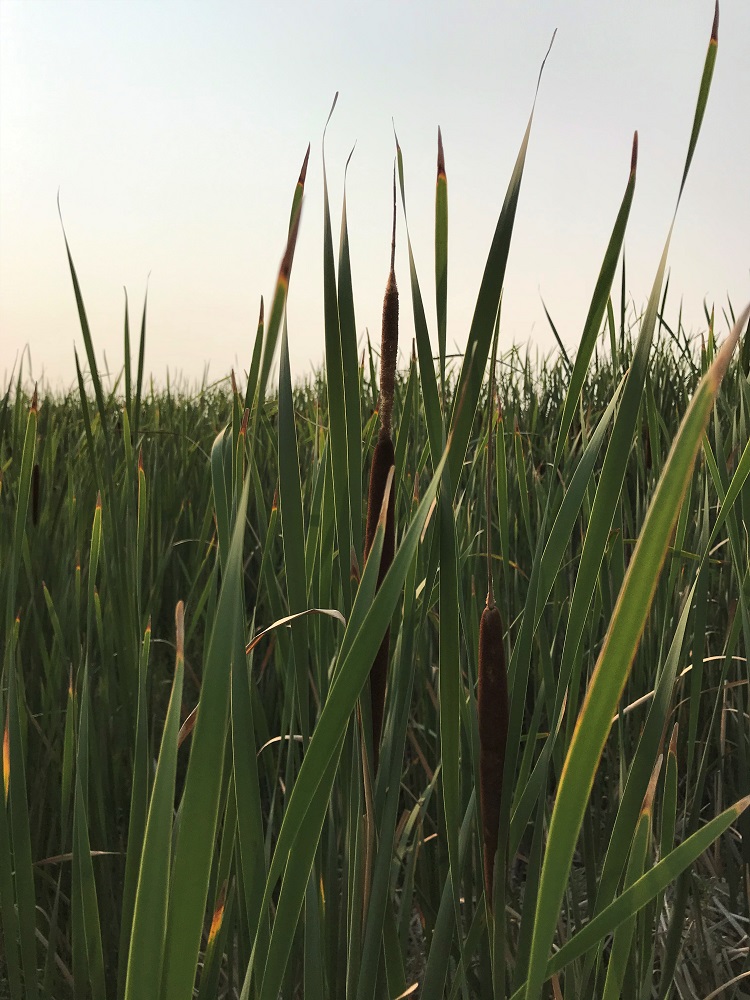Cattails are plants with long flat leaves that are found in marshy areas around ponds. Their flowerheads, referred to as spikes, look like a hot dog on a stick. In July, it looks like two hot dogs or spikes. The top spike is composed of thousands of male flowers that produce pollen for about 2 weeks in the summer. It gradually withers away through the summer and eventually drops off. The lower spike is composed of thousands of female flowers and lasts until winter.
There are two main types of Cattails in this area of Colorado: Broadleaf cattail and Narrowleaf cattail, although they can cross-breed to form a hybrid. There is also another type of Cattail in Colorado, the Southern Cattail, although that is not generally found as far north as Centennial.
Broadleaf cattail
Broadleaf cattails have narrow stems 3-9 feet tall with the flower spikes at the top. The leaves about the same length or slightly shorter and are 0.4″ to 1.2″ wide. The flower spikes are right next to each other and are not separated by any stem.
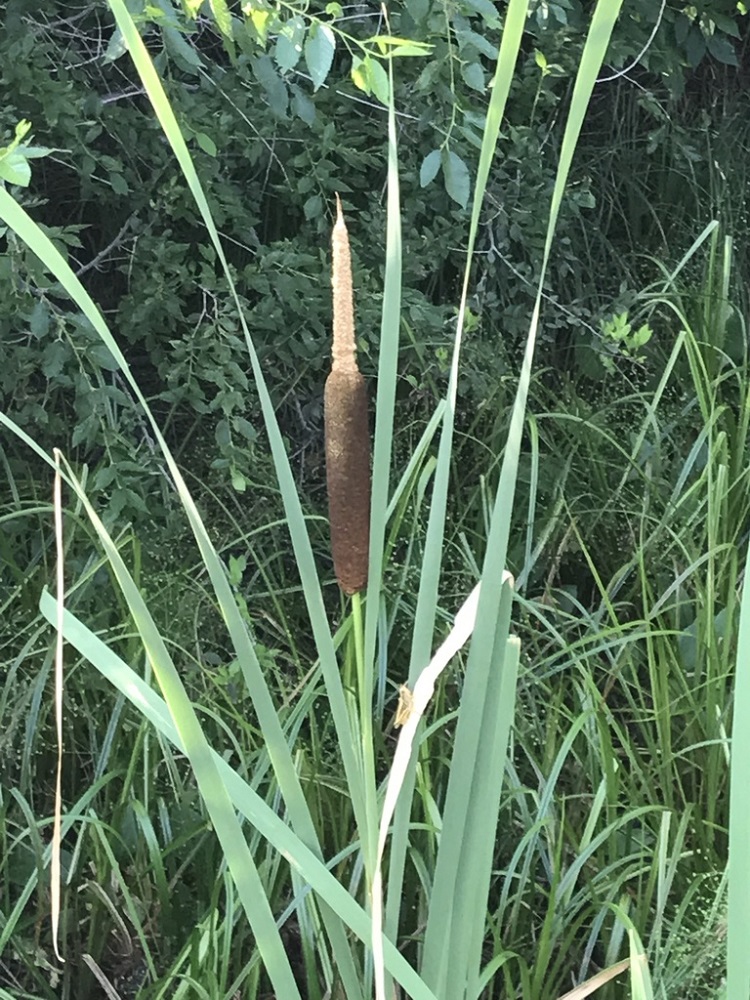
Narrowleaf cattail
Narrowleaf cattails have narrow stems 4-9 feet tall with the flower spikes at the top. The leaves are slightly longer and are 0.25″ to .6″ wide. The spikes are separated by about .4″ – 2″ of stem. Since the range of the width of leaves for Broadleaf and Narrowleaf cattails overlaps, it is more often whether the flower spikes are separated or not that helps point towards the correct species identification.
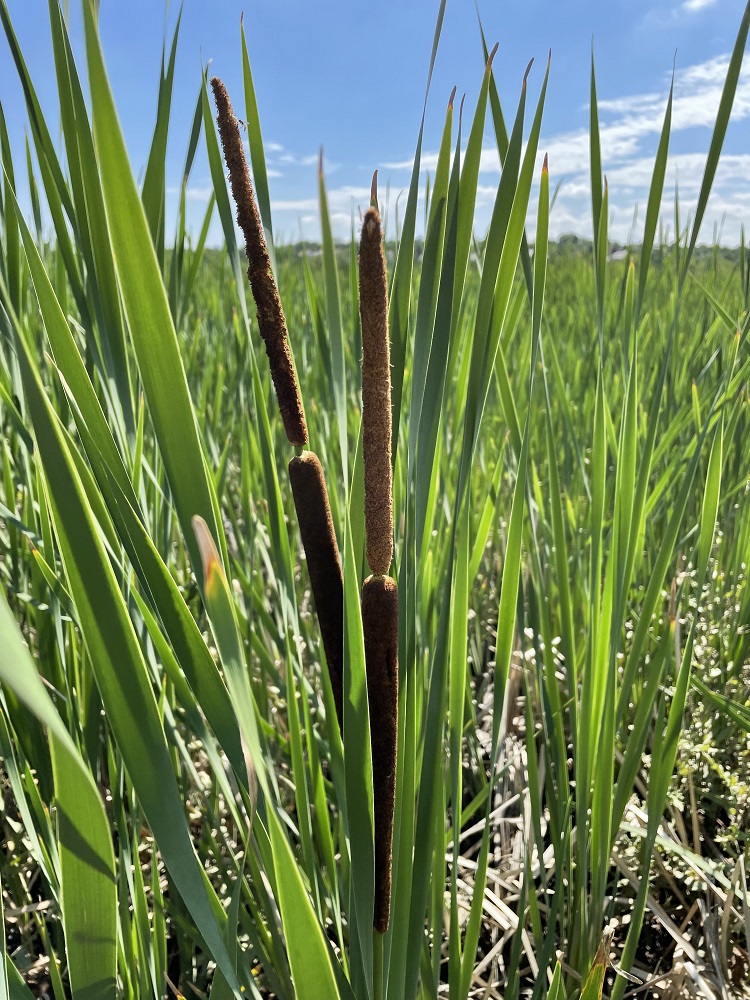
Scientific name and Plant Family Information
The Scientific name for the Broadleaf cattail is Typha latifolia and for the Narrowleaf cattail is Typha angustifolia. Typha comes from typhe which was the ancient Greek name for Cattails. Angusti is Latin for narrow, lati means broad in Latin and folia means leaves.
They are in the plant family Typhaceae (Cattail), which also has bur-reeds.
Plants in this family are semiaquatic or aquatic with long slender leaves and grow from rhizomes, which are starchy underground creeping stems.
The rhizomes grow a foot or more from the parent plant and then send up an aerial shoot that looks like a separate plant. They spread vigorously this way, filling up all available space, and they also spread through their seeds.
The leaves of the cattails look like they wouldn’t stand up to wind, but they are spirally twisted allowing them to bend and not get broken by the wind or by strong water currents.
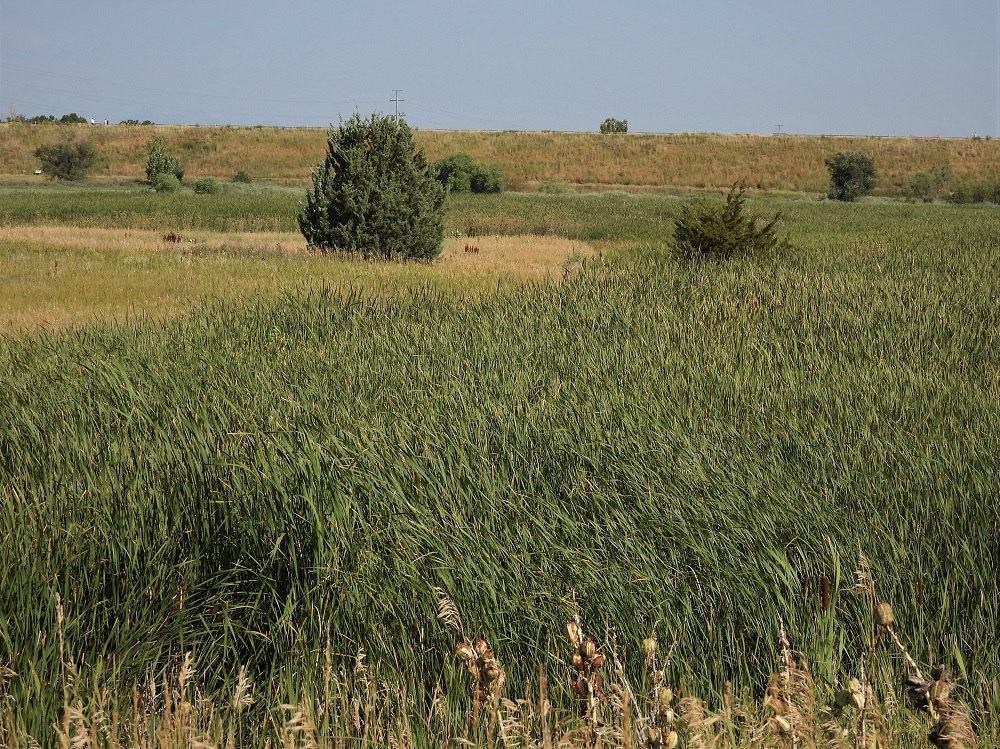
Through the Seasons
Cattails are perennial plants that start sending up green shoots in May. Sometimes the shoots can go unnoticed due to all the dead Cattail leaves and stems around them.
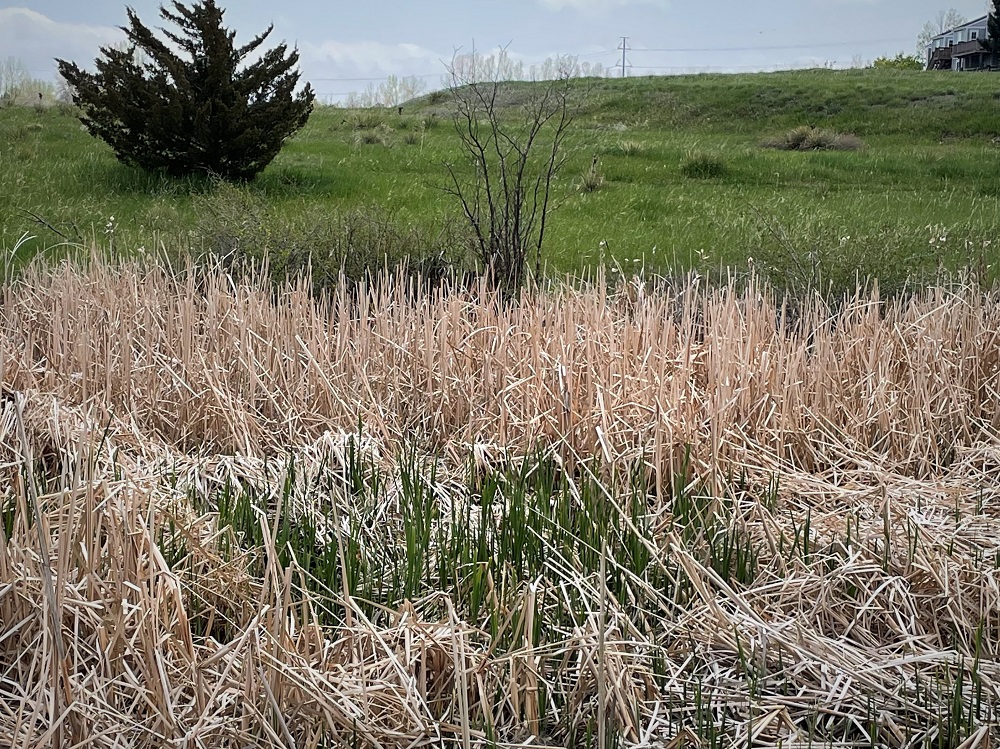
In about July, the flowers appear, and the male flowers release their pollen. After that, the stalks appear to only have the one spike.
In the fall and winter, the seed heads open up to show the fluffy cottony down which helps the wind carry the seeds. The leaves and stalks turn brown and remain in place.
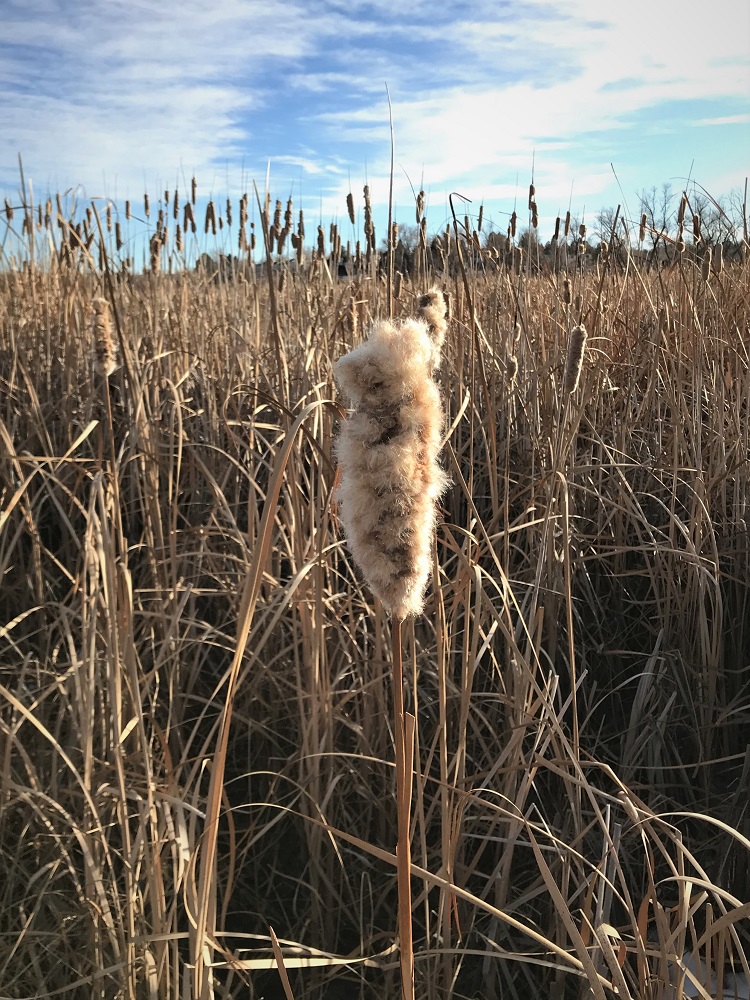
Native or Non-Native?
Both Narrowleaf and Broadleaf cattails are native to this area and grow in marshes, ponds and ditches. The Narrowleaf cattail is found at elevations from 3,400 to 6,000 feet, while the Broadleaf cattail can grow at elevations up to 8,600 feet.
Even though they are native to this area, they can still be invasive, rapidly filling ponds. The best way to control their spread is to cut off the leaves and stems of the plants underwater so they will drown.
Where to find in Willow Spring Open Space
There is a large area of Cattails South of the Englewood Dam, extending almost to Dry Creek Road.
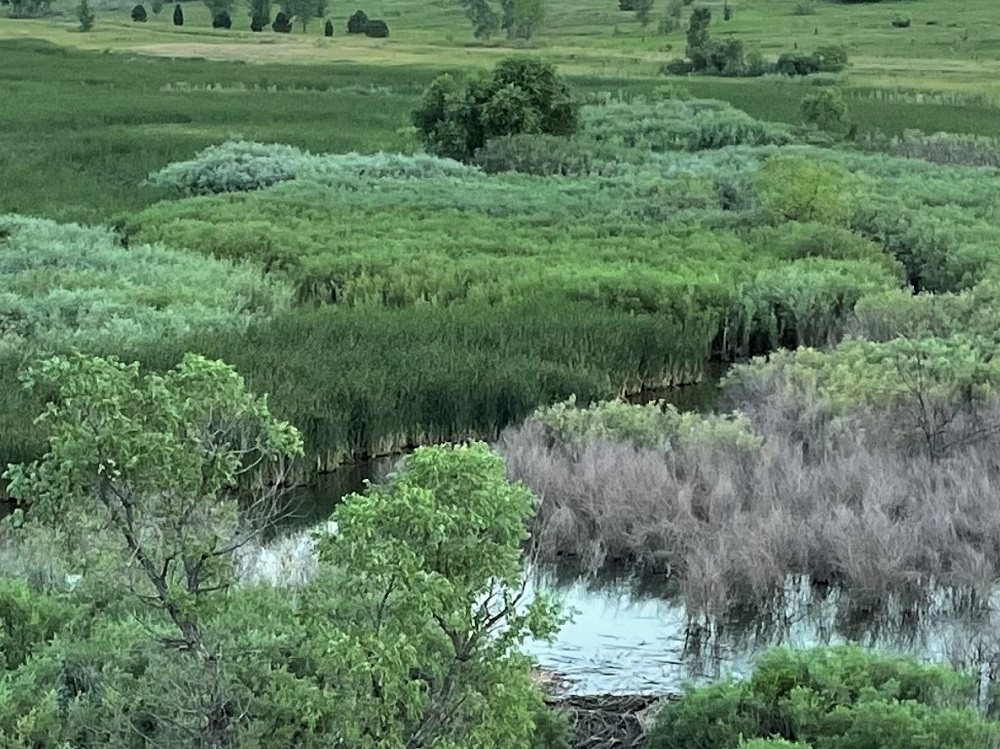
Did You Know?
Cattail marshes provide important nesting sites for Sora rails, Red-winged blackbirds and Marsh wrens. All parts of Cattails are edible when harvested at the appropriate stage of growth.
References and Further Reading
- Botany in a Day: The Patterns Method of Plant Identification, by Thomas J. Elpel, 1967
- Flora of Colorado, by Jennifer Ackerfield, 2015
- Colorado Native Plant Database Data Portal, Colorado State University
- Colorado Flora Eastern Slope: A Field Guide to the Vascular Plants, 4th Edition, by William A. Weber and Ronald C. Wittmann, 2012
- Field Guide to Colorado’s Wetland Plants, by Denise Culver and Joanna M. Lemly, 2013


